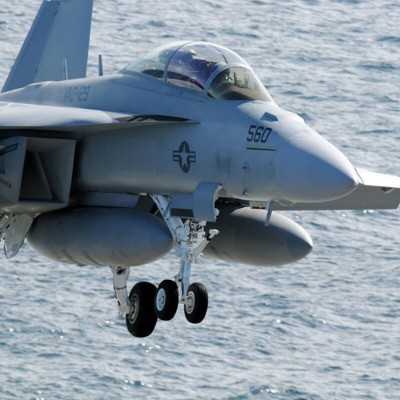These updates to are designed to provide Navy warfighters with the latest generation of airborne electronic attack capabilities. While in the field, these aircraft can be operated from the ground or the air. They are used primarily to jam, or suppress, radars and communications to protect from, and disable, hostile signals or electronic attacks.
The AN/ALQ-218(V) 2 receiver allows the EA-18G aircraft to surpass other Navy aircraft, such as the F/A-18F, in electronic warfare capability. This system is a radar warning receiver system that provides advanced electronic support measures and an electronic intelligence sensor system. The system enhances the Navy's ability to recognize immediate threats and provides data for longer term operational planning.
In the battlefield the AN/ALQ-218 is the first system able to detect, identify, and locate enemy sources by analyzing sources of radio frequency emissions, according to Northrop Grumman officials. This technology allows warfighters to make quicker and more intelligent decisions, which provides maximum protection to friendly forces, according to the company.
The AN/ALQ-218(V) 2 receiver provides Navy aircrew and commanders with signal intelligence gathering capabilities and situational awareness for reactive jamming of enemy systems; it’s high-powered jammer energy can be directed to specific threats and is capable of following changing enemy radar tactics, said the company.
This receiver works in conjunction with three AN/ALQ-99 radar jamming pods and a Raytheon AN/ALQ-227 communications countermeasures system to create the advanced airborne electronic attack capabilities of the EA-18G.
Additional features of the AN/ALQ-218 system include broad radio frequency range, high sensitivity and dynamic range capabilities, passive precision geolocation, specific emitter identification capabilities, and the latest generation frequency domain digital channelized receiver, said Northrop Grumman.
The AN/ALQ-218 is also installed in Navy P-8A Poseidon aircraft and a number of future Unmanned Aerial Vehicles.




 . Kumpaakaan väitettäsi et perustellut, joten en osaa edes niitä kumota, koska en ymmärrä mistä moiset ajatukset tulevat.
. Kumpaakaan väitettäsi et perustellut, joten en osaa edes niitä kumota, koska en ymmärrä mistä moiset ajatukset tulevat.